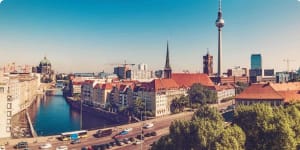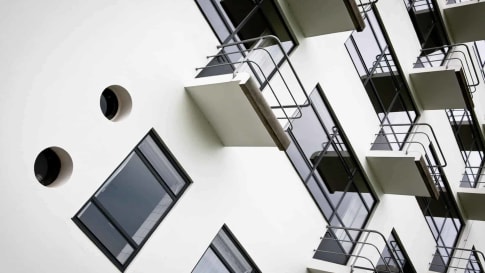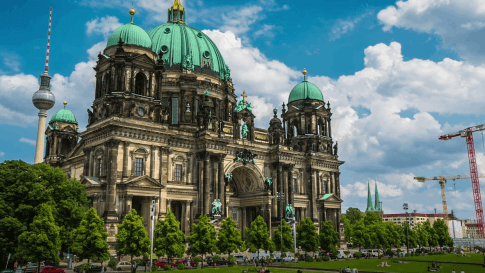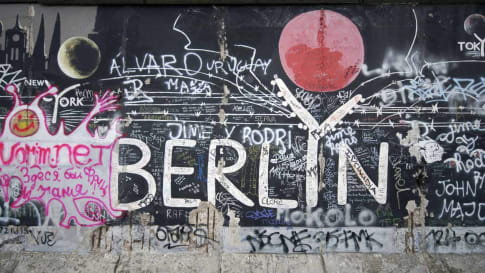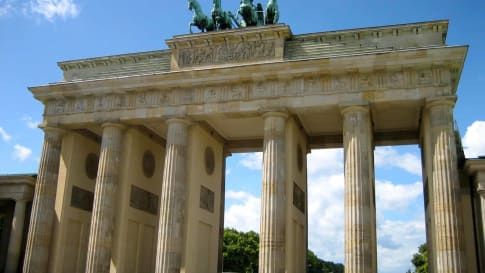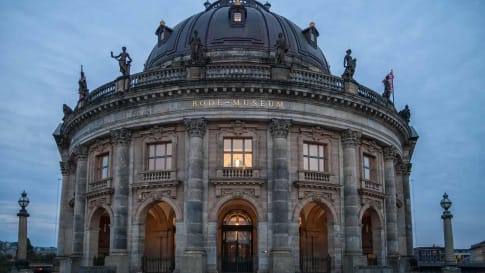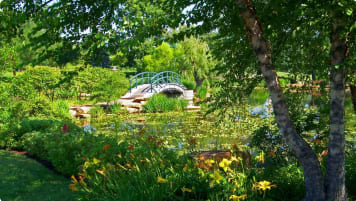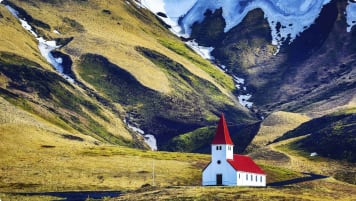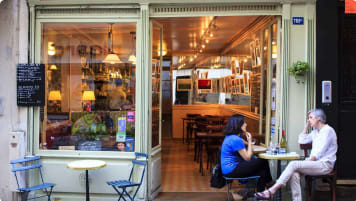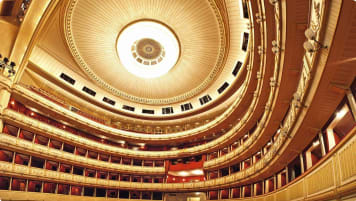Discovering Berlin Small Group Tour | 20 days living in Berlin
Experience Berlin while living there for almost three weeks in an apartment. From one of the best small group tour companies for Europe enjoy an escorted tour learning about the city's history and experiencing it like a Berliner. This holiday is for like minded people, mature couples or solo travelers who enjoy getting off the beaten track and exploring with some adventure.
From A$12,795AUD

Highlights
- 1. Learn about the history of Berlin through it's museums & galleries
- 2. Visit Sanssouci - summer palace of Frederick the Great
- 3. Attend up to 3 classical concert performances including a Cabaret in Berlin
- 4. Travel to Leipzig, where we learn about the city's musical connections
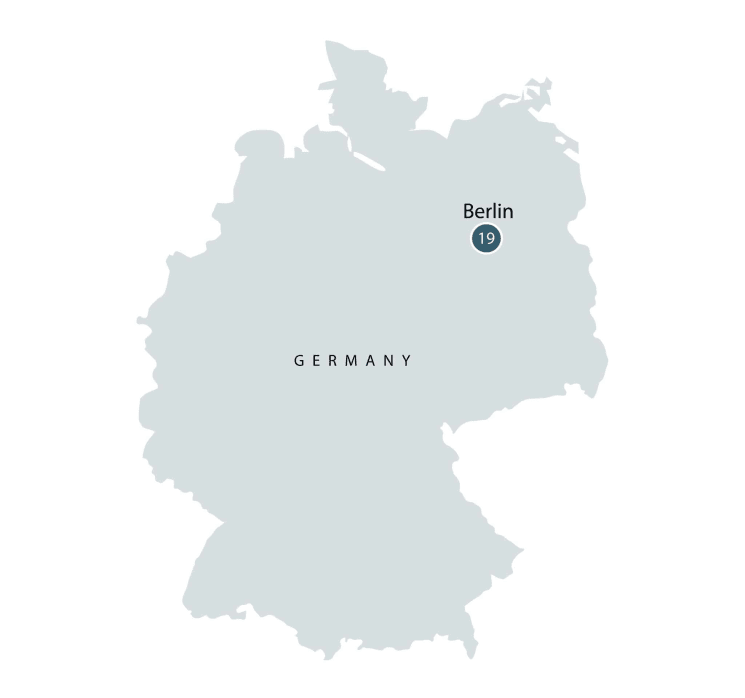
Departure Dates
| Departure Date | Price |
|---|---|
| 30 September 2024 Ends 19 October 2024 • 20 days A$12,795 Twin A$16,495 Single Available | Selected |
| 07 April 2025 Ends 26 April 2025 • 20 days A$13,450 Twin A$17,295 Single Available | |
| 29 September 2025 Ends 18 October 2025 • 20 days A$13,450 Twin A$17,295 Single Available | |
| 06 April 2026 Ends 25 April 2026 • 20 days A$13,450 Twin A$17,295 Single Available | |
| 28 September 2026 Ends 17 October 2026 • 20 days A$13,450 Twin A$17,295 Single Available |
Berlin Small Group Tour for Seniors
Discover Germany's capital city Berlin, with our Berlin small group tour for seniors. Spend 20 days living in this city. Berlin is one of the world's most beloved cities. It is steeped in complex history, but committed to keeping memories present so that the past can be learned from. When the Berlin Wall fell in 1989, an influx of creativity spread throughout the city, and this vibrancy is still palpable today. Parts of the wall were preserved for historic value, others converted into an open-air gallery. But on this small group tour, you will not only have the opportunity to learn about the city's history, you will also experience life as a Berliner.
You will stay in comfortable, self-contained apartments, used as a base from which we explore a different theme or location each day. This includes Berlin's surrounds, like Potsdam and Leipzig.
We explore museums from ancient history to twentieth century architecture and design. We visit historic sites like Wannsee House, where the Nazis and SS held their fateful 1942 meeting, and decided upon the so called "final solution". Few cities in the world offer such an intricate balance between history and the exciting contemporary. And few are as devoted to moving forward, but always with respect to the past. This small group tour gives you opportunities to learn, experience, see, smell, taste, cosmopolitan Berlin.
Highlights of this Berling small group tour
On this small group tour of Berlin, we visit the famous Checkpoint Charlie - a key exchange site of the Berlin Wall which has since been converted into a museum. The Story of Berlin Museum is another highlight. This interactive museum holds over 800 years of history, arranged into 23 themed rooms. It is designed to allow visitors to experience life in Berlin across the eras. Similarly, the DDR Museum offers immersive experiences of life in Soviet-era East Germany.
On a day trip to Potsdam, we visit Sanssouci. This is the summer palace of Frederick the Great, built between 1745 1747. The name Sans souci references a French expression for 'without worries', symbolic of the King's intention to treat this as a site of relaxation, rather than power. It is thought to rival Versailles: though smaller than its French counterpart, it is equally luxurious.
We also have the opportunity to visit the Memorial to the Jews of Europe. Designed by architect Peter Eisenman and engineer Buro Happold, the memorial consists of 2711 concrete slabs of concrete, or stelae. Reminiscent of coffins, they vary in height, creating a moving visual sense that invites contemplation. We also experience 'modern' Berlin, visiting the Olympic Stadium.
Included in the touring program are 3 concerts during your time in this city.
Odyssey prepared a list of recommended books about Berlin for those planning to visit the city.
You can also browse our Germany country profile for more information and for other tours that might be interesting for you.
For more details, click the ‘Top 5’ or ‘Itinerary’ buttons above! If you’re keen to experience this tour, please call or send an email. Or, to book, simply fill in the form on the right hand side of this page.
Articles about Berlin, Germany and published by Odyssey Traveller
The following list of articles published by odyssey Traveller for mature aged and senior travellers to maximise their knowledge and enjoyment of Berlin and Germany when visiting;
- A history of Berlin for Tourists.
- A guide to Germany
- Fifteen must see sights in Berlin
- A list of ten books for people thinking of visiting Berlin
- Ten of the Best art galleries in Europe to visit.
- The Bauhaus School
External articles to assist you on your visit to Berlin
- Understanding Germany
- UNESCO World heritage sites; Potsdam & Berlin, places to visit
- Berlin divided
- Secret Tunnel in Berlin is an Echo from the Cold War
Tour Notes
Itineraries may change if flight schedules, site availability, and other inclusions have to be amended prior to departure.
Gallery
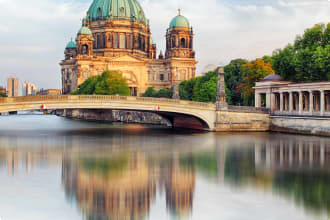
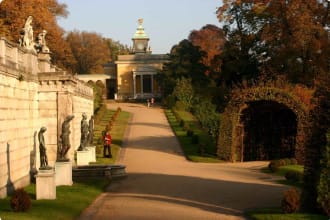

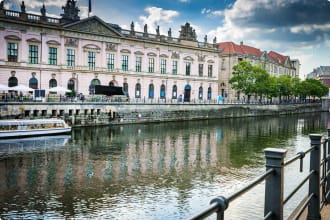
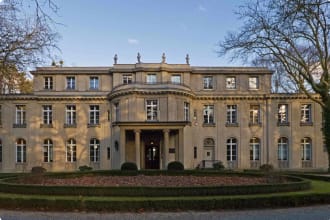


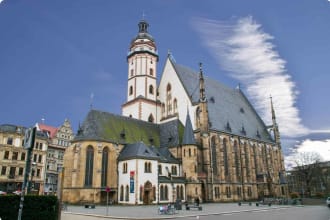
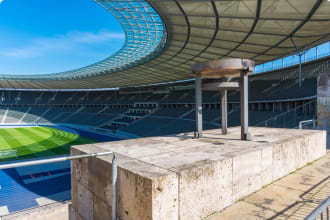
Itinerary
20 days
Day 1: Berlin
Accommodation: Apartment accommodation to be determined.
We make our way individually to the hotel. In the evening, we meet and enjoy dinner at a local restaurant.
Day 2: Berlin
Accommodation: Apartment accommodation to be determined.
On our first full day, we enjoy a full day orientation. We begin with a half day guided city tour, during which we visit a number of the city’s main sites, including the Brandenburg gate. In the afternoon, we take a tour of the Story of Berlin Museum.
Day 3: Berlin
Accommodation: Apartment accommodation to be determined.
Today is dedicated to a World War II tour, during which we visit the Checkpoint Charlie Museum, visit the Memorial to the Murdered Jews of Europe, the Allied Museum, the Holocaust Museum, and Wannsee House.
The Checkpoint Charlie Museum, named after a renowned crossing point of the Berlin Wall, has documented escapes from East to West Germany, as well as writing and objects relating to the wall.
Also known as the Holocaust Memorial, the Memorial to the Jews of Europe is one of the world’s best known memorial sites. It is comprised of 2711 rectangular concrete slabs covering 1.9 hectares.
Wansee House is the mansion in which Nazi and SS leaders gathered to plan the holocaust. Today, it is a museum that exhibits documents from the Wannsee Conference at which the planning took place, media presentations that cover the history of Jewish persecution, and a centre for the study of Nazism.
All or part of this day is optional.
Day 4: Berlin
Accommodation: Apartment accommodation to be determined.
Today we tour the city learning about the architecture and the social history pre WWI. We also visit the seat of German Government, enjoying a guided tour of the Reichstag.
Tonight there we will attend a performance of Ballet, Opera, classical music or Cabaret.
Day 5: Berlin
Accommodation: Apartment accommodation to be determined.
Today we embark on a full day excursion to Potsdam, including entrance to Cecilienhof Castle and Sanssouci Palace. Cecilienhof is an ornate palace, in the style of an English Tudor manor house, built between 1914 and 1917. Famously, it was the location of the Potsdam conference in which allied forces discussed what would happen to Germany after World War II.
Sanssouci Palace is an extraordinary eighteenth century palace in lush green surrounds. Built by Frederick the Great, to serve as his summer home, it is accompanied by a terraced vineyard and a great park. We return to Berlin in the evening and enjoy dinner at a local restaurant.
Day 6: Berlin
Accommodation: Apartment accommodation to be determined.
Today, we return to an aspect of Berlin’s history, with a guided tour that focuses on the city under the communist regime. We visit the Berlin Wall Documentation Centre, the East Side Gallery, and the DDR Museum. The interactive DDR Museum provides immersive experiences of life in East Germany, prior to the fall of the Berlin Wall.
Our local guide introduces to the world of espionage and the exchange of spies.
Day 7: Berlin
Accommodation: Apartment accommodation to be determined.
This morning, we experience a German food tour, which includes a visit to the flagship Ritter Sport shop. Set across three levels, you’ll discover all there is to know about chocolate here in Germany’s capital. Lunch is at a local currywurst restaurant.
The afternoon is at your leisure.
Day 8: Berlin
Accommodation: Apartment accommodation to be determined.
Today we explore One of Berlin’s most idiosyncratic art spaces, Boros Sammlung is a gallery hidden inside a monolithic, five-floor Second World War concrete bunker. The exhibition changes every four years.
This afternoon we walk a section of the Berlin’s 19th-century Landwehr Canal. This walk takes you through a collection of inner city districts including Kreuzberg’s café-lined embankments, Paul-Lincke-Ufer and Maybachufer. We pass Mies ran der Rohe’s striking Neue Nationalgalerie; the 1930s modernist ShellHaus building as well as the city’s celebrated Bauhaus Archiv.
Tonight we attend the second of 4 evening performances in Berlin.
Day 9: Berlin
Accommodation: Apartment accommodation to be determined.
Berlin is one of the most artistically sophisticated cities in the world, and today is dedicated to exploring the city’s galleries. We begin with the Pergamon museum, then visit the Musical Instruments Museum.
This afternoon we enjoy a 2 hour city walk of one of the key historic areas of Berlin.
Day 10: Berlin
Accommodation: Apartment accommodation to be determined.
In the morning, we travel to Sachsenhausen Concentration Camp, and take a tour with a local guide. The camp operated between 1936 and 1945, and saw the deaths and executions of around 30,000 people.
In the afternoon, we take a river cruise in Berlin.
This day is optional for travellers.
Day 11: Berlin
Accommodation: Apartment accommodation to be determined.
Today is dedicated to exploring the era of the Secret Police in Berlin, from the Nazi regime to the Stasi that operated in the east, when the wall stood. We visit the Topography of Terror Museum, then the Hohenschonhausen Memorial, and the Stasi Prison Museum.
The Topography of Terror Museum is in the location of the original Gestapo headquarters, and exhibits document the terror wrought by the security arm of the Nazi regime. The Hohenschonhausen Memorial exists on the site of the Stasi’s main political prison, the institution depicted in the film The Lives of Others.
In the evening we have dinner at a local restaurant.
Day 12: Berlin
Accommodation: Apartment accommodation to be determined.
This morning we head to the world heritage listed Island of museums. We have a guide give us an introduction to key pieces tours in the two museums we are visiting, the Hamburgerbahnhof Museum, the Neues Museum. The Pergamon Museum, which houses antiquities, is known for the magnificent Pergamon Altar.
In the afternoon is at your leisure.
Tonight we will attend our third concert.
Day 13: Berlin and Dresden
Accommodation: Apartment accommodation to be determined.
Today is entirely at your leisure.
Day 14: Berlin- Dresden return
Accommodation: Apartment accommodation to be determined.
Today we take a full-day excursion to Dresden. While there, we visit Albertinum, a gallery showcasing art from the Romantic period to the present day. We view the Castle Eckberg, before heading to the Green Vault. The Green vault is a historic museum featuring an enormous number of treasures that once made up the private collection of Augustus the Strong, the ruler of Saxony. It may, in fact, be the largest treasure vault in the world!
We then view the Procession of the Dukes, a large mural originally painted between 1871 and 1876, painted on the stables at Dresden Castle. At the end of the day we return to Berlin.
Day 15: Berlin
Accommodation: Apartment accommodation to be determined.
Today we enjoy a tour focusing on Germany’s ancient history. We begin with a guided tour of the German History Museum. We then tour Charlottenburg Castle, a magnificent palace built and expanded in the seventeenth and eighteenth centuries. The palace is surrounded by beautiful gardens, which are in turn surrounded by woodlands. We also visit the Berlin Cathedral, and enter the Barberini Museum.
We have dinner tonight at a local restaurant.
Day 16: Berlin
Accommodation: Apartment accommodation to be determined.
The theme of today’s tour is ‘modern Berlin’. We explore some of the city’s modern and contemporary art galleries, as well as the Bauhaus archive and museum, which is dedicated to architecture and design. Later, we visit the Olympic Stadium. It was originally built for the 1936 games, but has since hosted the men’s and women’s FIFA world cups.
Tonight we will attend our 3 of 4 concerts on this program.
Day 17: Berlin
Accommodation: Apartment accommodation to be determined.
Today is the final ‘free day’ scheduled. You might like to spend it revisiting some of your favourite locations, or perhaps to catch up on some rest.
Day 18: Berlin and Leipzig
Accommodation: Apartment accommodation to be determined.
We take a full-day excursion to Leipzig, today. The vibrant capital of Saxony is located 160 km southwest of Berlin. It is very popular amongst lovers of music, for its connections to composers Bach and Mendelssohn. We visit the two museums devoted to these important figures.
Later, we return to our apartment in Berlin.
Day 19: Berlin
Accommodation: Apartment accommodation to be determined.
Today we join our guide for a trip to Spandau. Spandau as a place pre-dates Berlin. Our guide shows around this enclave which is surrounded on 3 sides by water his morning to learn about the history and people. Our walking tour the middle ages, the renaissance through to the present day.
Afternoon is free to visit or re-visit places at your leisure.
This evening there is a farewell dinner.
Day 20: Berlin
Our tour concludes after breakfast.
Includes / Excludes
What’s included in our Tour
- 20 nights accommodation in a serviced apartment.
- 1 lunch, and 5 dinners.
- 4 concerts or cabaret performances.
- Transport using local rail and public transport.
- All excursions, entrance fees, and local guides.
- Gratuities and necessary tips.
- Services of Tour Leader for the duration of tour.
- Detailed information booklet.
What’s not included in our Tour
- International airfares and departure taxes.
- Comprehensive travel insurance.
- Items of a personal nature such as telephone calls and laundry.
- Porterage.
Participants must be able to carry their own luggage, climb and descend stairs, be in good health, mobile and able to participate in 3-5 hours of physical activity per day, the equivalent of walking / hiking up to 8 kilometers per day on uneven ground.
Book now
Make it a private tour
Easing your journey
Crossing international borders with restrictions
The list of requirements to travel internationally has changed and will continue to change for several years. Odyssey is here to assist you in managing your way through these requirements:
For more information see our Crossing international borders with restrictions page.
Book With Confidence
If less than 30 days before your tour starts you are unable to travel as a result of Government travel restrictions, Odyssey Traveller will assist you with a date change, provide you with a credit or process a refund for your booking less any non-recoverable costs.
See Terms and conditions for details.
Peace of Mind Travel
The safety of our travellers, tour leader, local guide and support staff has always been our top priority and with the new guidelines for public health and safety for keeping safe for destinations around the world, we’ve developed our plan to give you peace of mind when travelling with us.
See Peace of Mind Travel for details.
Reading List Download PDF
Berlin: Portrait of a City Through the Centuries
Rory MacLean
Berlin is a city of fragments and ghosts, a laboratory of ideas, the fount of both the brightest and darkest designs of history's most bloody century. The once arrogant capital of Europe was devastated by Allied bombs, divided by the Wall, then reunited and reborn as one of the creative centers of the world. Today it resonates with the echo of lives lived. No other city has repeatedly been so powerful and fallen so low; few other cities have been so shaped and defined by individual imaginations.
Berlin tells the volatile history of Europe's capital over five centuries through a series of intimate portraits of two dozen key residents: the medieval balladeer whose suffering explains the Nazis' rise to power; the genius Jewish chemist who invented poison gas for First World War battlefields and then the death camps; the iconic mythmakers like Christopher Isherwood, Leni Riefenstahl, and David Bowie, whose heated visions are now as real as the city's bricks and mortar. Alongside are portrayed some of the countless ordinary Berliners whose lives can only be imagined: the ambitious prostitute who refashioned herself as a baroness, the fearful Communist Party functionary who helped to build the Wall, and the American spy from the Midwest whose patriotism may have turned the course of the Cold War.
Berlin is a history book like no other, with an originality that reflects the nature of the city itself. In its architecture, through its literature, in its movies and songs, Berliners have conjured their hard capital into a place of fantastic human fantasy. No other city has so often surrendered itself to its own seductive myths. Berlin captures, portrays, and propagates the remarkable story of those myths and their makers.
The Fall of Berlin 1945
Antony Beevor
The Red Army had much to avenge when it finally reached the frontiers of the Third Reich in January 1945. Frenzied by their terrible experiences with Wehrmacht and SS brutality, they wreaked havoc—tanks crushing refugee columns, mass rape, pillage, and unimaginable destruction. Hundreds of thousands of women are children froze to death or were massacred; more than seven million fled westward from the fury of the Red Army. It was the most terrifying example of fire and sword ever known.
Antony Beevor has reconstructed the experiences of those millions caught up in the nightmare of the Third Reich's final collapse. The Fall of Berlin is a terrible story of pride, stupidity, fanaticism, revenge, and savagery, yet it is also one of astonishing endurance, self-sacrifice, and survival against all odds.
The Berlin Stories
Christopher Isherwood
A classic of 20th-century fiction, The Berlin Stories inspired the Broadway musical and Oscar-winning film Cabaret.
First published in the 1930s, The Berlin Stories contains two astonishing related novels, The Last of Mr. Norris and Goodbye to Berlin, which are recognized today as classics of modern fiction. Isherwood magnificently captures 1931 Berlin: charming, with its avenues and cafés; marvelously grotesque, with its nightlife and dreamers; dangerous, with its vice and intrigue; powerful and seedy, with its mobs and millionaires―this is the period when Hitler was beginning his move to power. The Berlin Stories is inhabited by a wealth of characters: the unforgettable Sally Bowles, whose misadventures in the demimonde were popularized on the American stage and screen by Julie Harris in I Am A Camera and Liza Minnelli in Cabaret; Mr. Norris, the improbable old debauchee mysteriously caught between the Nazis and the Communists; plump Fräulein Schroeder, who thinks an operation to reduce the scale of her Büste might relieve her heart palpitations; and the distinguished and doomed Jewish family, the Landauers.
The Ghosts of Berlin: Confronting German History in the Urban Landscape
Brian Ladd
In this compelling work, Brian Ladd examines the ongoing conflicts radiating from the remarkable fusion of architecture, history, and national identity in Berlin. Ladd surveys the urban landscape, excavating its ruins, contemplating its buildings and memorials, and carefully deconstructing the public debates and political controversies emerging from its past.
"Written in a clear and elegant style, The Ghosts of Berlin is not just another colorless architectural history of the German capital. . . . Mr. Ladd's book is a superb guide to this process of urban self-definition, both past and present."—Katharina Thote, Wall Street Journal
"If a book can have the power to change a public debate, then The Ghosts of Berlin is such a book. Among the many new books about Berlin that I have read, Brian Ladd's is certainly the most impressive. . . . Ladd's approach also owes its success to the fact that he is a good storyteller. His history of Berlin's architectural successes and failures reads entertainingly like a detective novel."—Peter Schneider, New Republic
"[Ladd's] well-written and well-illustrated book amounts to a brief history of the city as well as a guide to its landscape."—Anthony Grafton, New York Review of Books
Bach in Berlin: Nation and Culture in Mendelssohn’s Revival of the St. Matthew Passion
Celia Applegate
Bach’s St. Matthew Passion is universally acknowledged to be one of the world’s supreme musical masterpieces, yet in the years after Bach’s death it was forgotten by all but a small number of his pupils and admirers. The public rediscovered it in 1829, when Felix Mendelssohn conducted the work before a glittering audience of Berlin artists and intellectuals, Prussian royals, and civic notables. The concert soon became the stuff of legend, sparking a revival of interest in and performance of Bach that has continued to this day. Mendelssohn’s performance gave rise to the notion that recovering and performing Bach’s music was somehow “national work”. In 1865, Wagner would claim that Bach embodied “the history of the German spirit’s inmost life”. That the man most responsible for the revival of a masterwork of German Protestant culture was himself a converted Jew struck contemporaries as less remarkable than it does us today―a statement that embraces both the great achievements and the disasters of 150 years of German history.
In this book, Celia Applegate asks why this particular performance crystallized the hitherto inchoate notion that music was central to Germans’ collective identity. She begins with a wonderfully readable reconstruction of the performance itself and then moves back in time to pull apart the various cultural strands that would come together that afternoon in the Singakademie. The author investigates the role played by intellectuals, journalists, and amateur musicians (she is one herself) in developing the notion that Germans were “the people of music.” Applegate assesses the impact on music’s cultural place of the renewal of German Protestantism, historicism, the mania for collecting and restoring, and romanticism. In her conclusion, she looks at the subsequent careers of her protagonists and the lasting reverberations of the 1829 performance itself.
Escape from the Third Reich: The Harrowing True Story of the Largest Rescue Effort Inside Nazi Germany
Sune Persson
The Swedish Red Cross expedition to the German concentration camps from March to April 1945 was the largest rescue effort inside Germany during WWII. Led by Count Bernadotte of Wisborg, the mission became known for its distinctive buses. Each bus was purposefully painted entirely white except for the Red Cross emblem on the side so that they would not be mistaken for military targets. According to conservative figures in May 1945, at least 17,000 prisoners were transported to Sweden by these white buses.
In the first book to detail this remarkable and hazardous operation, and with never-before-published photographs of the bus journeys, the details of Bernadotte’s harrowing expedition to Ravensbruck concentration camp and his secret negotiations with Heinrich Himmler are revealed
The Berlin Wall: The History and Legacy of the World's Most Notorious Wall
Charles Rivers
“From Stettin in the Baltic to Trieste in the Adriatic an ‘Iron Curtain’ has descended across the continent. Behind that line lie all the capitals of the ancient states of Central and Eastern Europe. Warsaw, Berlin, Prague, Vienna, Budapest, Belgrade, Bucharest and Sofia; all these famous cities and the populations around them lie in what I must call the Soviet sphere, and all are subject, in one form or another, not only to Soviet influence but to a very high and in some cases increasing measure of control from Moscow.” – Winston Churchill, 1946
"This is a historic day. East Germany has announced that, starting immediately, its borders are open to everyone. The GDR is opening its borders ... the gates in the Berlin Wall stand open." – German anchorman Hans Joachim Friedrichs
Though it never got “hot,” the Cold War was a tense era until the dissolution of the USSR, and nothing symbolized the split more than the Berlin Wall, which literally divided the city. Berlin had been a flashpoint even before World War II ended, and the city was occupied by the different Allies even as the close of the war turned them into adversaries. After the Soviets’ blockade of West Berlin was prevented by the Berlin Airlift, the Eastern Bloc and the Western powers continued to control different sections of the city, and by the 1960s, East Germany was pushing for a solution to the problem of an enclave of freedom within its borders. West Berlin was a haven for highly-educated East Germans who wanted freedom and a better life in the West, and this “brain drain” was threatening the survival of the East German economy.
In order to stop this, access to the West through West Berlin had to be cut off, so in August 1961, Soviet premier Nikita Khrushchev authorized East German leader Walter Ulbricht to begin construction of what would become known as the Berlin Wall. The wall, begun on Sunday August 13, would eventually surround the city, in spite of global condemnation, and the Berlin Wall itself would become the symbol for Communist repression in the Eastern Bloc. It also ended Khrushchev’s attempts to conclude a peace treaty among the Four Powers (the Soviets, the Americans, the United Kingdom, and France) and the two German states. The wall would serve as a perfect photo-opportunity for two presidents (Kennedy and Reagan) to hammer the Soviet Communists and their repression, but the Berlin Wall would stand for nearly 30 years, isolating the East from the West. It is estimated about 200 people would die trying to cross the wall to defect to the West.
Things came to a head in 1989. With rapid change throughout Europe, the wall faced a challenge it could not contain, the challenge of democracy’s spread. On the night of November 9, 1989, the Berlin Wall was effectively removed from the midst of the city it so long divided ─removed with pick axes and sledgehammers, but also removed from the hearts and minds of the people on both sides who only hours before had thought the wall’s existence insurmountable. As one writer put it, “No border guard, no wall, can forever shield repressive regimes from the power of subversive ideas, from the lure of freedom.”
The fall of the Berlin Wall is often considered the end of the Cold War, and the following month both President Bush and Gorbachev declared the Cold War over, but the Cold War had been thawing for most of the 1980s. President Reagan is remembered for calling the Soviet Union an “evil empire” and demanding that Gorbachev tear down the wall, but he spent the last several years of his presidency working with the Soviet leader to improve relations. The end of the Soviet Union came when Gorbachev resigned on December 25, 1991. The Soviet Union formally dissolved the next day.
